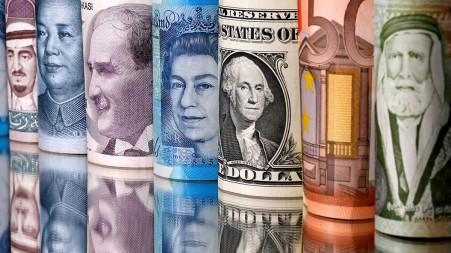Reserves to slip below $22b after ACU payment next week
$1.2 billion import bills are expected to be cleared on Monday

The country’s foreign exchange reserves are set to slip below $22 billion after clearing the import bills of $1.2 billion with the Asian Clearing Union (ACU) next week, according to Bangladesh Bank sources.
The reserves stood at $23.06 billion as of 30 August. As such, it will be slightly more than $21.86 billion after the import bill payment.
The ACU payment for the July-August period is expected to be $100 million higher than the previous two months and will be cleared on Monday, according to a senior official at the central bank.
“Although the country’s overall imports decreased during the period, the imports from Asian countries were on an upward trend,” he added.
According to data from the central bank, the country last month cleared $1.1 billion in ACU payments for the May-June period.
The ACU payment gateway covers monetary transactions by its nine member countries – Bangladesh, Bhutan, India, Iran, the Maldives, Myanmar, Nepal, Pakistan, and Sri Lanka – for regional imports. The bills are cleared every two months.
On 13 July, the Bangladesh Bank calculated forex reserves according to the Balance of Payments and International Investment Position Manual, Sixth Edition (BPM6) suggested by the International Monetary Fund (IMF).
After that, the country’s gross foreign exchange reserves dropped by $6.44 billion to $23.56 billion.
Ahsan H Mansur, executive director of the Policy Research Institute, said the sale of dollars from reserves must be stopped to prevent their erosion.
“The dollar rate should be left to the market. This will increase the flow of remittances and export proceeds, which will help rebuild the reserves in the long run,” the economist told The Business Standard.
According to data from the central bank, the ACU payment was $1.18 billion and $1.1 billion during the March-April and January-February periods this year, respectively.
However, the ACU payments for September–October 2022 were $1.32 billion. It was $1.96 billion during the May-June period last year.
Bangladesh’s imports fell sharply in the last fiscal year, as reflected by the slide in the opening of letters of credit (LCs), driven by a shortage of US dollars.
According to the central bank, private and public entities opened LCs of $69.36 billion in fiscal 2022–23, down 26% from $94.26 billion a year ago.
Although the country’s imports have been decreasing for the past year, reserve erosion could not be stopped because the central bank sold the highest amount of dollars in the outgoing financial year.
The Bangladesh Bank sold $14 billion to banks in FY23, compared to $7.62 billion in the previous fiscal year, to settle import bills.
Last February, the IMF disbursed $476.27 million to Bangladesh as the first tranche of the $4.7 billion loan. The second instalment is expected to be released later this year.
According to the terms of the IMF loan agreement, the country’s net reserves should be $25.31 billion in September and $26 billion at the end of December.
According to central bank sources, after the ACU payment next week, the reserves will slip below $22 billion, and the net reserves will be even lower by another $2 billion.




